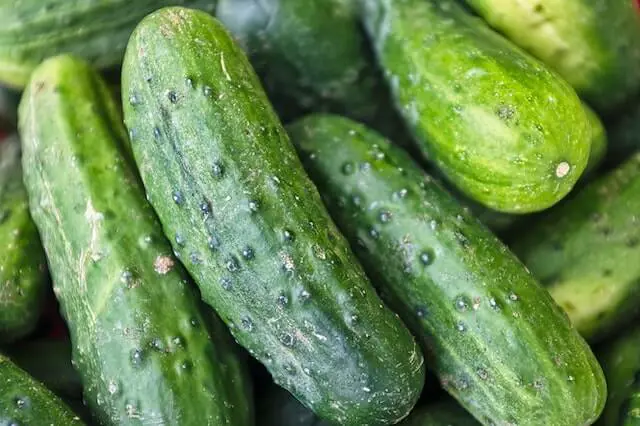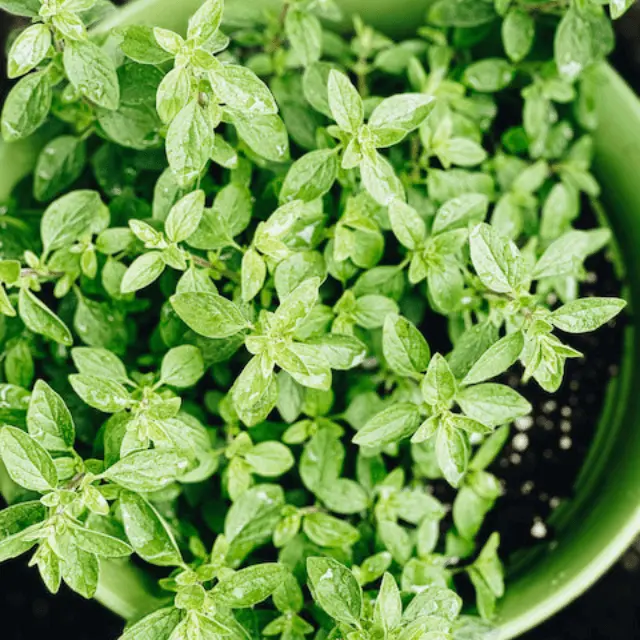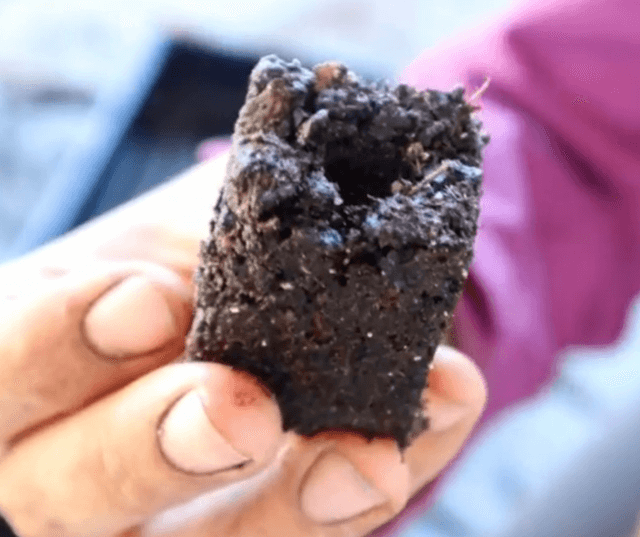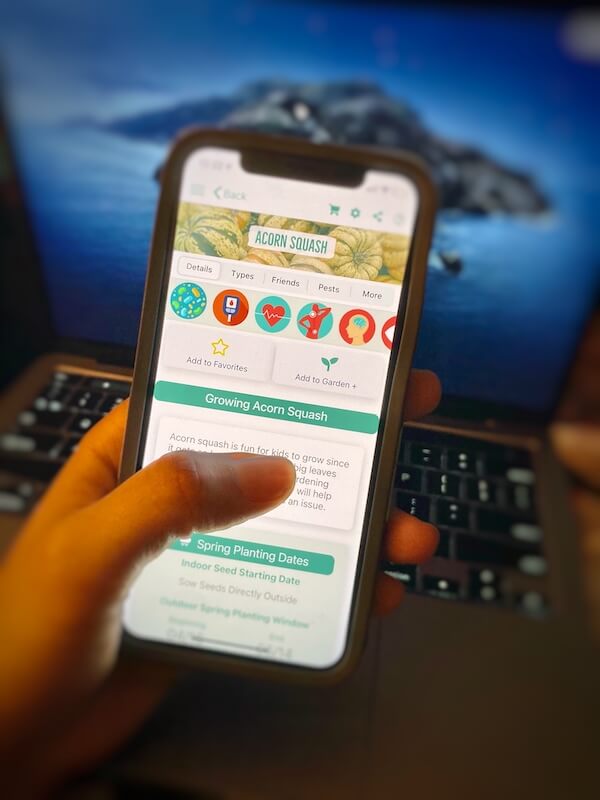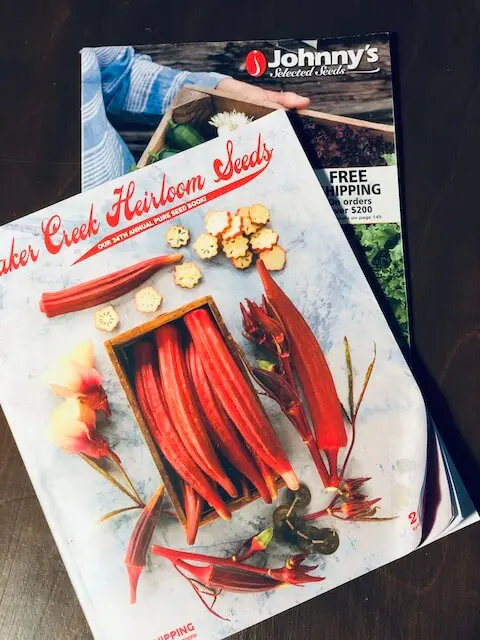The Best Guide to Growing Lettuce indoors
Learn easy and quick tips on growing lettuce indoors from seed!
This post may contain affiliate links. As an Amazon Associate, I earn from qualifying purchases. Please read my Disclaimer for more information.
Here are helpful tips on growing lettuce indoors that will thrive in containers, and direct sowing them yourself.
Growing lettuce indoors from seed is so easy and so much fun!
Table of Contents

Lettuce from seed: Fast Facts
- Lettuce is an annual (1-year garden life)
- Ethylene producing fruit (apples, bananas) can affect lettuces lifespan in the fridge
- Darker lettuce has more nutrients than lighter lettuce
- This winter vegetable is 96% water
- Best grown in 60-degree weather
Use any type of store-bought, homemade container, or bag to grow lettuce!
Let’s get to how to grow lettuce indoors!
Lettuce seeds
Type of lettuces:
- Butterhead: Most popular is type is Boston and Bibb
- Romaine: Paris island, Cimmaron, and Little Gem are some of the most popular varieties.
- Iceberg: One of the sweetest lettuces, and grows well in warmer climates
- Loose-leaf: One of the easiest lettuce to grow and harvest, Black Seeded Simpson, Red sails, and Oakleaf are some of the most popular varieties.
Varieties of lettuces to grow from seed:
Heat tolerant lettuce: Mascara, Buttercrunch, Black-Seeded Simpson, Cherokee lettuce, Ice-queen, Black seeded Simpson, Arugula, Black summer, Muir, Coastal Star, Bok choy, Roman lettuce
Cold Tolerant lettuce: Mache, Tasoi, Claytonia, Kale, Spinach, Red-tinged winter, inter Marvel, Tango, North Pole, Green Forest, Winter density, Red salad bowl, Land Cres, Claytonia

Supplies needed for seed starting
Regardless if you are growing lettuce in containers ( be sure to have a nice size pot with drainage on the bottom), … you might need some seed starting equipment linked below.
- Seed Starting Kit
- Container, pots, or growing bags
- Seed Starting heat pad
- Water
- Grow light kit hydroponics (if growing with only water, not soil)
- Garden Stake labels (Great to label all your plants)
- Compost
- Watering can
- Seed Starting mix
- Water wand (optional, but very handy)
- Seedling Widger (optional, but very handy)
Growing lettuce indoors directions
- Fill your container, or tray with a seed starting mix or container soil and then with some compost on top.
- You can scatter seeds directly on soil in a container or space them out 8-12 inches apart if direct sowing. If using a seed tray, place 2-3 seeds in each cell.
- After sowing your seeds, lightly sprinkle some compost/soil on top of the seeds and then water.
- Place in the sunlight to germinate, this process may take up to 2 weeks.
- Keep your seedlings between around 71 degrees for best germination.
- If growing straight in a container, keep lettuce by the best place that gets at least 6 hours of direct sunlight a day. Growing lights are best to get the full sun effect needed.
When your lettuce starts to grow, you might need to pull out some leaves (called thinning) to make more space and promote air movement.
Growing lettuce indoors TIPS
- Wet soil first before sowing seeds.
- Add labels when seed starting if you are growing multiple varieties of lettuce. Help keep track of what you are growing.
- You can add a little organic fertilizer like fish emulsion at least 3 weeks later.
- The richer your soil and compost the better your food will grow
- You can plant seeds every 2 weeks for multiple harvests!

Tips Growing lettuce indoor: Seedlings
- Place seed tray under heat lamps
- Position seedling next to a window seal that gets a lot of sunlight
- Put your seed tray on top of your fridge (it’s actually warm up there!)
- Keep seed starting tray over a heating pad
Growing Lettuce indoors: Care
After your lettuce starts to grow about 3 inches tall transplant your plants into your container in a place where it gets a lot of sun but also gets shade at times.
Lettuce needs at least 6-8 hours of sun & some shade if you are growing lettuce in a warmer climate.
Tips to Care for Lettuce plants
- Water more frequently if when you put your finger into the soil and its dry
- Never overwater, but keep the soil moist.
- After lettuce has grown a couple of inches place mulch on top to keep the soil moist.
- Every 2-3 weeks use an organic fertilizer during the growing season if needed
Lettuce has shallow roots and does not tolerate being drench in water.
You also will need a pot that can hold soil that is at least 6 inches deep and is well-drained so the roots can keep moist not damped.
The colder the weather the sweetest the taste, but if it is too hot your lettuce can be bitter and bolt (go to seed faster).
Common Pest
- Aphids: Very tiny and almost invisible bugs, read more about them here.
- Botrytis: Gray-looking mold
- Lettuce mosaic: A virus that takes over the plant, read all the science behind this plant infection here.
Tips for Lettuce Pest
- Welcome ladybugs to eat pest
- Water directly to push smaller bugs away.
- Place insect netting to keep away critters
Growing lettuce indoors- Harvest

Lettuce can be harvested between 40-60 days. You don’t want to miss out on the multiple harvests!
Loose-leaf lettuce can be cut by leaving at least 1-2 inches of the plants behind, as it will continue to grow and provide multiple harvests.
When harvesting, pick the outer leaves of the plant or cut off an entire head of lettuce (depending on the variety).
Equipment to help you Harvest
- Harvest basket
- Garden gloves ( optional )
- Mini snips ( you can use your hands, but garden snips are handy too)
Hopefully, all these tips help you grow lettuce from seed successfully.
For more gardening information, be sure to check out these awesome articles:
- 12 Must-know tips: How to choose the right seeds for your garden
- Amazing Seed storage and organization ideas!
- FREE Gardening Apps that are Worth Downloading
Let me know if these tips were helpful in the comments below!

Don’t forget to spread the Love ❤️ & Share this Post!

